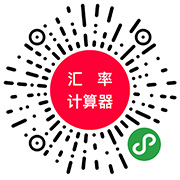Ancient Egyptian Sculpture
In order to understand ancient Egyptian art, it is vital to know as much as possible of the elite Egyptians‘ view of the world and the functions and contexts of the art produced for them. Without this knowledge we can appreciate only the formal content of Egyptian art, and we will fail to understand why it was produced or the concepts that shaped it and caused it to adopt its distinctive forms. In fact, a lack of understanding concerning the purposes of Egyptian art has often led it to be compared unfavorably with the art of other cultures: Why did the Egyptians not develop sculpture in which the body turned and twisted through space like classical Greek statuary? Why do the artists seem to get left and right confused? And why did they not discover the geometric perspective as European artists did in the Renaissance? The answer to such questions has nothing to do with a lack of skill or imagination on the part of Egyptian artists and everything to do with the purposes for which they were producing their art.
The majority of three-dimensional representations, whether standing, seated, or kneeling, exhibit what is called frontality: they face straight ahead, neither twisting nor turning. When such statues are viewed in isolation, out of their original context and without knowledge of their function, it is easy to criticize them for their rigid attitudes that remained unchanged for three thousand years. Frontality is, however, directly related to the functions of Egyptian statuary and the contexts in which the statues were set up. Statues were created not for their decorative effect but to play a primary role in the cults of the gods, the king, and the dead. They were designed to be put in places where these beings could manifest themselves in order to be the recipients of ritual actions. Thus it made sense to show the statue looking ahead at what was happening in front of it, so that the living performer of the ritual could interact with the divine or deceased recipient. Very often such statues were enclosed in rectangular shrines or wall niches whose only opening was at the front, making it natural for the statue to display frontality. Other statues were designed to be placed within an architectural setting, for instance, in front of the monumental entrance gateways to temples known as pylons, or in pillared courts, where they would be placed against or between pillars: their frontality worked perfectly within the architectural context.
Statues were normally made of stone, wood, or metal. Stone statues were worked from single rectangular blocks of material and retained the compactness of the original shape. The stone between the arms and the body and between the legs in standing figures or the legs and the seat in seated ones was not normally cut away. From a practical aspect this protected the figures against breakage and psychologically gives the images a sense of strength and power, usually enhanced by a supporting back pillar. By contrast, wooden statues were carved from several pieces of wood that were pegged together to form the finished work, and metal statues were either made by wrapping sheet metal around a wooden core or cast by the lost wax process. The arms could be held away from the body and carry separate items in their hands; there is no back pillar. The effect is altogether lighter and freer than that achieved in stone, but because both perform the same function, formal wooden and metal statues still display frontality.
Apart from statues representing deities, kings, and named members of the elite that can be called formal, there is another group of three-dimensional representations that depicts generic figures, frequently servants, from the nonelite population. The function of these is quite different. Many are made to be put in the tombs of the elite in order to serve the tomb owners in the afterlife. Unlike formal statues that are limited to static poses of standing, sitting, and kneeling, these figures depict a wide range of actions, such as grinding grain, baking bread, producing pots, and making music, and they are shown in appropriate poses, bending and squatting as they carry out their tasks.
Paragraph 1:In order to understand ancient Egyptian art, it is vital to know as much as possible of the elite Egyptians’ view of the world and the functions and contexts of the art produced for them. Without this knowledge we can appreciate only the formal content of Egyptian art, and we will fail to understand why it was produced or the concepts that shaped it and caused it to adopt its distinctive forms. In fact, a lack of understanding concerning the purposes of Egyptian art has often led it to be compared unfavorably with the art of other cultures: Why did the Egyptians not develop sculpture in which the body turned and twisted through space like classical Greek statuary? Why do the artists seem to get left and right confused? And why did they not discover the geometric perspective as European artists did in the Renaissance? The answer to such questions has nothing to do with a lack of skill or imagination on the part of Egyptian artists and everything to do with the purposes for which they were producing their art.
1. The word vital in the passage is closest in
○ attractive
○ essential
○ usual
○ practical
2. Paragraph 1 suggests that one reason Egyptian art is viewed less favorably than other art is that Egyptian art lacks
○ a realistic sense of human body proportion
○ a focus on distinctive forms of varying sizes
○ the originality of European art
○ the capacity to show the human body in motion
3. In paragraph 1, the author mentions all of the following as necessary in appreciating Egyptian art EXCEPT an understanding of
○ the reasons why the art was made
○ the nature of aristocratic Egyptian beliefs
○ the influences of Egyptian art on later art such as classical Greek art
○ how the art was used
Paragraph 2:The majority of three-dimensional representations, whether standing, seated, or kneeling, exhibit what is called frontality: they face straight ahead, neither twisting nor turning. When such statues are viewed in isolation, out of their original context and without knowledge of their function, it is easy to criticize them for their rigid attitudes that remained unchanged for three thousand years. Frontality is, however, directly related to the functions of Egyptian statuary and the contexts in which the statues were set up. Statues were created not for their decorative effect but to play a primary role in the cults of the gods, the king, and the dead. They were designed to be put in places where these beings could manifest themselves in order to be the recipients of ritual actions. Thus it made sense to show the statue looking ahead at what was happening in front of it, so that the living performer of the ritual could interact with the divine or deceased recipient. Very often such statues were enclosed in rectangular shrines or wall niches whose only opening was at the front, making it natural for the statue to display frontality. Other statues were designed to be placed within an architectural setting, for instance, in front of the monumental entrance gateways to temples known as pylons, or in pillared courts, where they would be placed against or between pillars: their frontality worked perfectly within the architectural context.
4. According to paragraph 2, why are Egyptian statues portrayed frontalty?
○ To create a psychological effect of distance and isolation
○ To allow them to fulfill their important role in ceremonies of Egyptian life
○ To provide a contrast to statues with a decorative function
○ To suggest the rigid, unchanging Egyptian philosophical attitudes
5. The word context in the passage is closest in meaning to
○ connection
○ influence
○ environment
○ requirement
6. The author mentions an architectural setting in the passage in order to
○ suggest that architecture was as important as sculpture to Egyptian artists
○ offer 3 further explanation for the frontal pose of Egyptian statues
○ explain how the display of statues replaced other forms of architectural decoration
○ illustrate the religious function of Egyptian statues
7. The word they in the passage refers to
○ statues
○ gateways
○ temples
○ pillared courts
Paragraph 3:Statues were normally made of stone, wood, or metal. Stone statues were worked from single rectangular blocks of material and retained the compactness of the original shape. The stone between the arms and the body and between the legs in standing figures or the legs and the seat in seated ones was not normally cut away. From a practical aspect this protected the figures against breakage and psychologically gives the images a sense of strength and power, usually enhanced by a supporting back pillar. By contrast, wooden statues were carved from several pieces of wood that were pegged together to form the finished work, and metal statues were either made by wrapping sheet metal around a wooden core or cast by the lost wax process. The arms could be held away from the body and carry separate items in their hands; there is no back pillar. The effect is altogether lighter and freer than that achieved in stone, but because both perform the same function, formal wooden and metal statues still display frontality.
8. According to paragraph 3, why were certain areas of a stone statue left uncarved?
○ To prevent damage by providing physical stability
○ To emphasize that the material was as important as the figure itself
○ To emphasize that the figure was not meant to be a real human being
○ To provide another artist with the chance to finish the carving
9. The word core in the passage is closest in meaning to
○ material
○ layer
○ center
○ frame
10. According to paragraph 3, which of the following statements about wooden statues is true?
○ Wooden statues were usually larger than stone statues.
○ Wooden statues were made from a single piece of wood.
○ Wooden statues contained pieces of metal or stone attached to the front.
○ Wooden statues had a different effect on the viewer than stone statues.
Paragraph 4:Apart from statues representing deities, kings, and named members of the elite that can be called formal, there is another group of three-dimensional representations that depicts generic figures, frequently servants, from the nonelite population. The function of these is quite different. Many are made to be put in the tombs of the elite in order to serve the tomb owners in the afterlife. Unlike formal statues that are limited to static poses of standing, sitting, and kneeling, these figures depict a wide range of actions, such as grinding grain, baking bread, producing pots, and making music, and they are shown in appropriate poses, bending and squatting as they carry out their tasks.
11. The word depicts in the passage is closest in meaning to
○ imagines
○ classifies
○ elevates
○ portrays
12. According to paragraph 4, what is the difference between statues that represent the Egyptian elite and statues that represent the nonelite classes?
○ Statues of the elite are included in tombs, but statues of the nonelite are not.
○ Statues of the elite are in motionless poses, while statues of the nonelite are in active poses.
○ Statues of the elite are shown standing, while statues of the nonelite are shown sitting or kneeling
○ Statues of the elite serve an important function, while statues of the nonelite are decorative
Paragraph 4:Apart from statues representing deities, kings, and named members of the elite that can be called formal, there is another group of three-dimensional representations that depicts generic figures, frequently servants, from the nonelite population. ■The function of these is quite different. ■Many are made to be put in the tombs of the elite in order to serve the tomb owners in the afterlife. ■Unlike formal statues that are limited to static poses of standing, sitting, and kneeling, these figures depict a wide range of actions, such as grinding grain, baking bread, producing pots, and making music, and they are shown in appropriate poses, bending and squatting as they carry out their tasks. ■
13. Look at the four squares [■] that indicate where the following sentence could be added to the passage.
In fact, it is the action and not the figure itself that is important.
Where would the sentence best fit?
14.Directions: An introductory sentence for a brief summary of the passage is provided below. Complete the summary by selecting the THREE answer that express the most important ideas in the passage. Some sentences do not belong in the summary because they express ideas that not presented in the passage or are minor ideas in the passage. This question is worth 2 points.
The distinctive look of ancient Egyptian sculpture was determined largely by its function.
●
●
●
Answer Choices
○ The twisted forms of Egyptian statues indicate their importance in ritual actions.
○ The reason Egyptian statues are motionless is linked to their central role in cultural rituals.
○ Stone, wood, and metal statues all display the feature of frontality.
○ Statues were more often designed to be viewed in isolation rather than placed within buildings.
○ The contrasting poses used in statues of elite and nonelite Egyptians reveal their difference in social status.
○ Although the appearances of formal and generic statues differ, they share the same function.
参考答案:
1. ○2
2. ○4
3. ○3
4. ○2
5. ○3
6. ○2
7. ○1
8.○1
9. ○3
10. ○4
11. ○4
12. ○2
13. ○4
14. ○2 3 5
参考译文:
古埃及雕塑
为了能深入理解古埃及艺术,极为重要的一点是要尽可能多地了解其精英阶层的世界观以及当时艺术创造的功能和背景。若是没有这些认识,我们只能窥探到古埃及艺术的外在情境而无法理解它们创造出来的目的和所秉持的理念,也无法得知其采用的独特艺术形式的原因。事实上,正是因为人们缺乏对这些根本意义的了解,让古埃及文化艺术在与其他艺术进行对比时往往遭到质疑:为什么古埃及的雕塑作品不像古希腊的经典作品那样,在空间上进行弯曲和旋转?为什么那些艺术家看上去似乎都左右不分?又是为什么,在那些艺术作品里,完全没有体现过文艺复兴时期欧洲艺术里普遍采用的几何透视?然而,这些问题的答案完全不能说明古埃及的艺术家技艺不佳或者缺乏想象力,而恰恰体现了他们创造这些艺术的意义所在。
在大部分立体三维的雕像中,无论是站着,坐着抑或是跪着的,都体现着一种成为“正面描绘”的手法:它们往往直面前方,从不弯曲或翻转。如果脱离对其原始情境的了解和功能作用的认识这样单独看去,你将会对它们三千年不变的僵硬姿态发出责难。然而事实上,这种“正面描绘”的展示手法与古埃及雕塑的功能和创造背景有着密切的联系。当时,雕塑被创造出来不仅仅作为装饰,更重要的是应用于对神灵、国王和逝者的祭祀典礼上。它们被特地放置着,使那些接受膜拜的神灵和人物得以显现,能够更直接地观看到整个仪式的表演,并能与表演者互通心灵,传达神意。这些雕塑通常被放置在只有正面开口的矩形神龛或者壁龛中,这样也使得这些作品必须通过正面展现。有些雕塑也被放置在建筑系列中,比如说,塔门(神殿通道入口的纪念碑)的正前方,和支柱结构法庭中的支柱对面或者两柱之间——正是这种正面展示方式让这些雕塑都与周围的建筑环境相得益彰。
这些雕塑通常是由石头,木材和金属做成的。石制雕像是用长方形的石料制成,并且保持着原有的形状和比例。站姿雕塑的身体与胳膊之间、两腿之间的石料或者是坐姿石像的大腿与座位之间的石料通常不会去掉。从实际的外形来看通常石像会在背部增加一个支撑柱已达到保护石像的外形以免出现断裂并且在心理上展现并且增强一种力量与权利的感觉。与之相比,木质雕像是把许多块木头钉在一起再进行雕刻而成的,金属雕塑是在木质的内里外涂上一层薄薄的金属,或是再用蜡抛光。手臂可以离开身体并且保持拿在手中的东西与手之间相隔离。它们也没有背部支柱。效果相比于石质雕塑更亮表述也更自如。但是因为都是用于相同的用途,木质的和金属的雕塑依旧是正面描绘的表现形式。
除去为神灵,国王和有记载的贵族成员所塑的雕像会有特定的外形,其他的非贵族成员中和频繁出现的仆人都是用通用的一般化外表来描绘的。很多都被制作出来放进贵族的棺材为的是在来生服侍墓地的主人。不像一般的雕塑那样局限在站、坐或者跪几个静态的姿势里。这些图像描绘的行动相当多样,例如研磨谷物,烤焙面包,制作瓦罐或者演奏音乐,同时他们以适当的姿势,或弯腰或蹲下来完成他们的工作。









 大马U.S.News排名
大马U.S.News排名 2022大马QS排名
2022大马QS排名 马来西亚QS亚洲排名
马来西亚QS亚洲排名 高考后留学美国
高考后留学美国






 香港大学
香港大学 香港中文大学
香港中文大学 香港科技大学
香港科技大学 香港理工大学
香港理工大学 香港城市大学
香港城市大学 香港浸会大学
香港浸会大学

